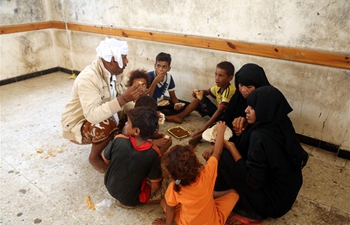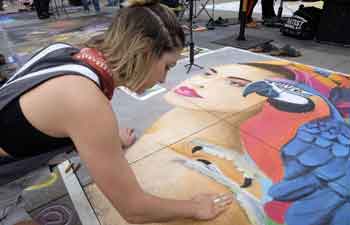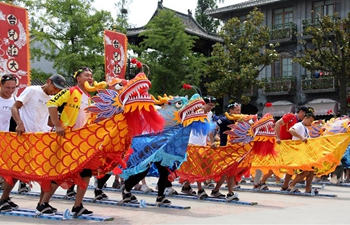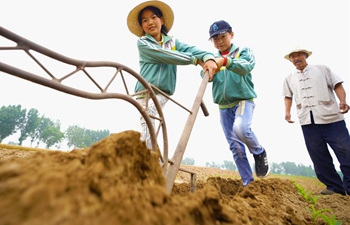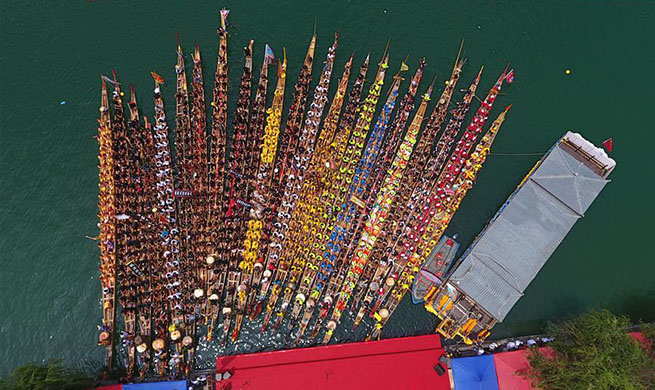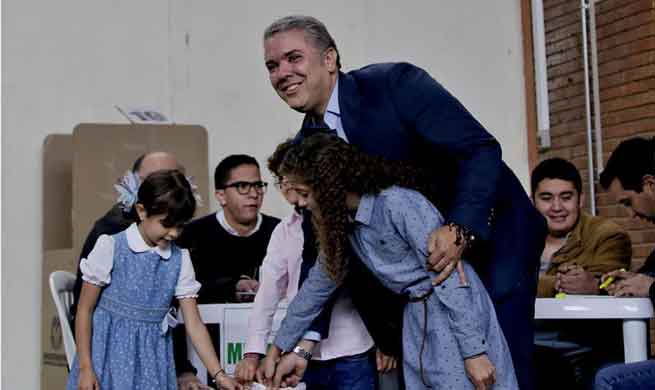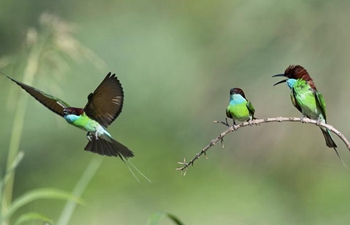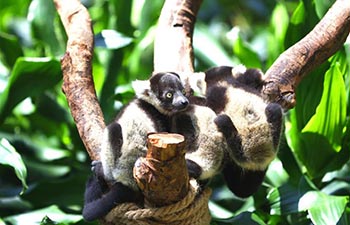HOHHOT, June 18 (Xinhua) -- In the morning, Serguleng rides his motorbike across the prairie in north China's Inner Mongolia Autonomous Region to collect cattle and sheep bones.
By carving auspicious images, animals or grassland scenery on the bones, he has been keeping alive Mongolian bone carving, although its traditional functions have been gradually lost in modern times.
When Serguleng's motorbike comes into sight, his relatives bring out their discarded animal bones for him. Serguleng sits on the ground, checking the bones piece by piece and picking the most intact pieces with the hardest textures.
"Hard bones are not easily broken when I carve them," said Serguleng, 42, who is an artist from Siziwang Banner, under the jurisdiction of the city of Ulanqab.
Selecting the right bones is a time-consuming task. He collects various animal bones from across the grassland, boils them to remove the tendons, and bleaches them with hydrogen peroxide. After this process, the softest bones will be discarded.
The bones are usually from animals such as cattle, sheep, goats, horses or camels. Serguleng carves images based on the bones' specific features.
The shoulder blade of cattle is big and flat, on which complex graphic images of animals can be carved. The ankle bone of goat or sheep is small and flexible and can be sculpted into wheels of a Mongolian cart. The bones of camel are hard and can be used to make a saddle.
"Maintaining the simple and unadorned nature of animal bones in carving is my rule," said Serguleng.
It took him three months to complete a morin khuur, or horsehead fiddle, made of pieces of bone. He considers this artwork a representation of his respect of the bones.
"I used a horse scull to make the box, straight leg bones of sheep for the bridge, cattle leg bone for horse head, and goat's horn for crooked horse's neck," he said.
He also carved many complex images on the body of the instrument, including symbols representing fire, a lotus throne, and a lucky knot.
"These images represent good luck and peace in Mongolian culture. Modern bone carving artworks pursue artistic aesthetics, so I will add more decorative images on my artwork," he said.
Over time, Mongolian bone carvings have shifted from functional uses to pieces of art. Traditionally, herdsmen used cattle or sheep bones to manufacture articles of daily use.
Serguleng's grandfather was the first in his family to study traditional Mongolian bone carving. Since the 1930s, he has turned bones into everything ranging from saddles to ear picks.
"My grandfather and father were both bone carvers. They created daily necessities from animal bones. They focused more on the practical use of the items," he said.
Economic development in the region has improved the lives of millions, with more physical stores opening and online shopping increasing. Buying daily necessities has become easier.
Serguleng started creating his bone carvings independently in 2000, and found the traditional Mongolian technique had gradually lost its old function.
"People have fewer demands. Now bone carvings are more like artworks and are kept for their aesthetic value," he said.
In recent years, Siziwang Banner has been developing tourism by opening scenic areas on the prairie. Bone carvings have become popular souvenirs among tourists.
New challenges have come. Some tourists complain that the bone turns yellow over the years.
"I treated the yellowing of bones as a normal phenomenon in the past. But now I'm studying how to make the bone carvings retain their original color as long as possible," he said.
At the end of last year, Ulanqab listed Mongolian bone carving as an intangible cultural heritage. But Serguleng has not taken on any apprentices to pass on the traditional skills.
His son is still in middle school. "I don't want to force him to do anything. If he's interested in bone carving after graduation, I'll teach him," he said.
Serguleng said he still feels young and doesn't think much about future. He hopes to create more bone carvings and spread the stories of the prairie to people from afar.




